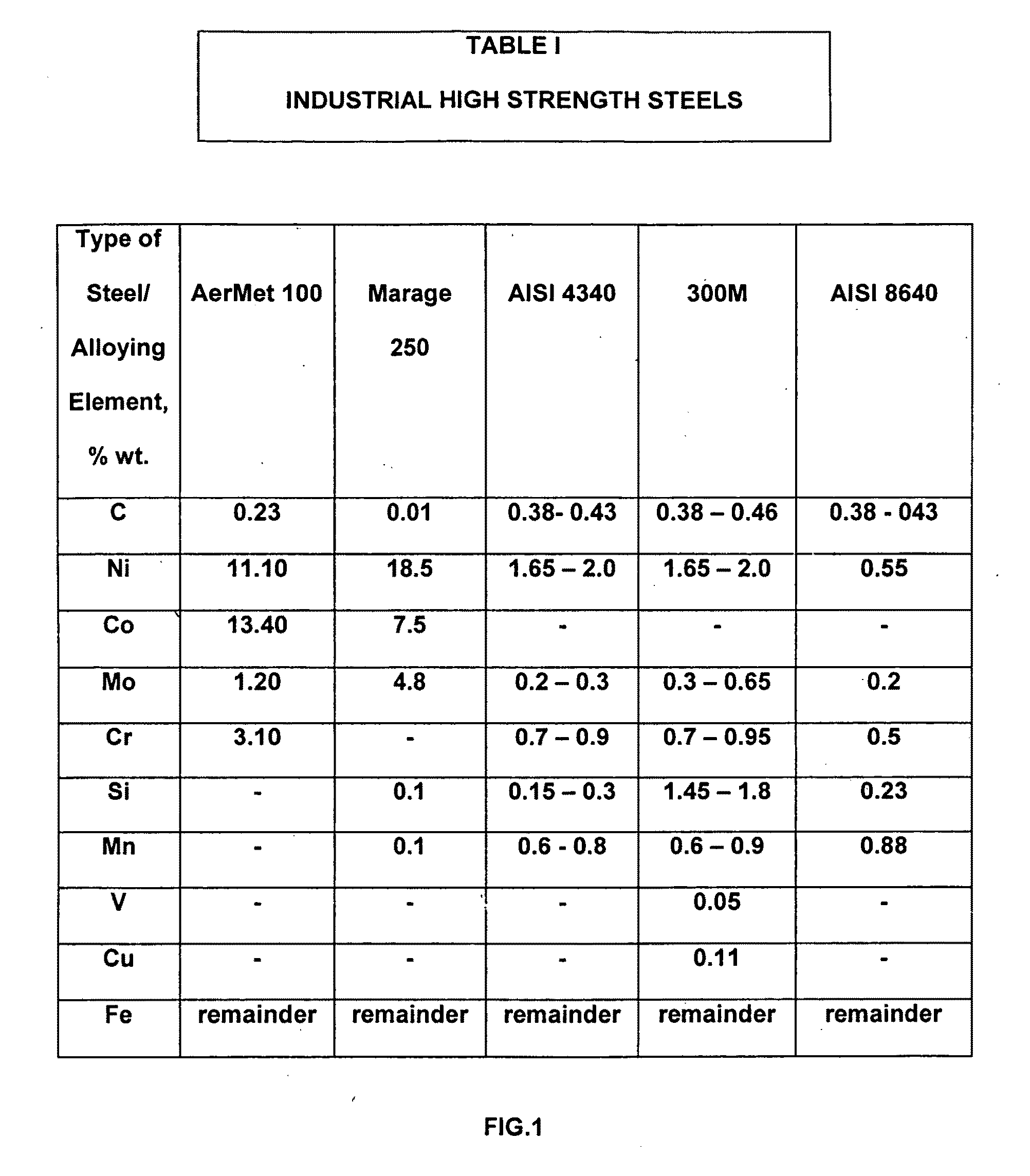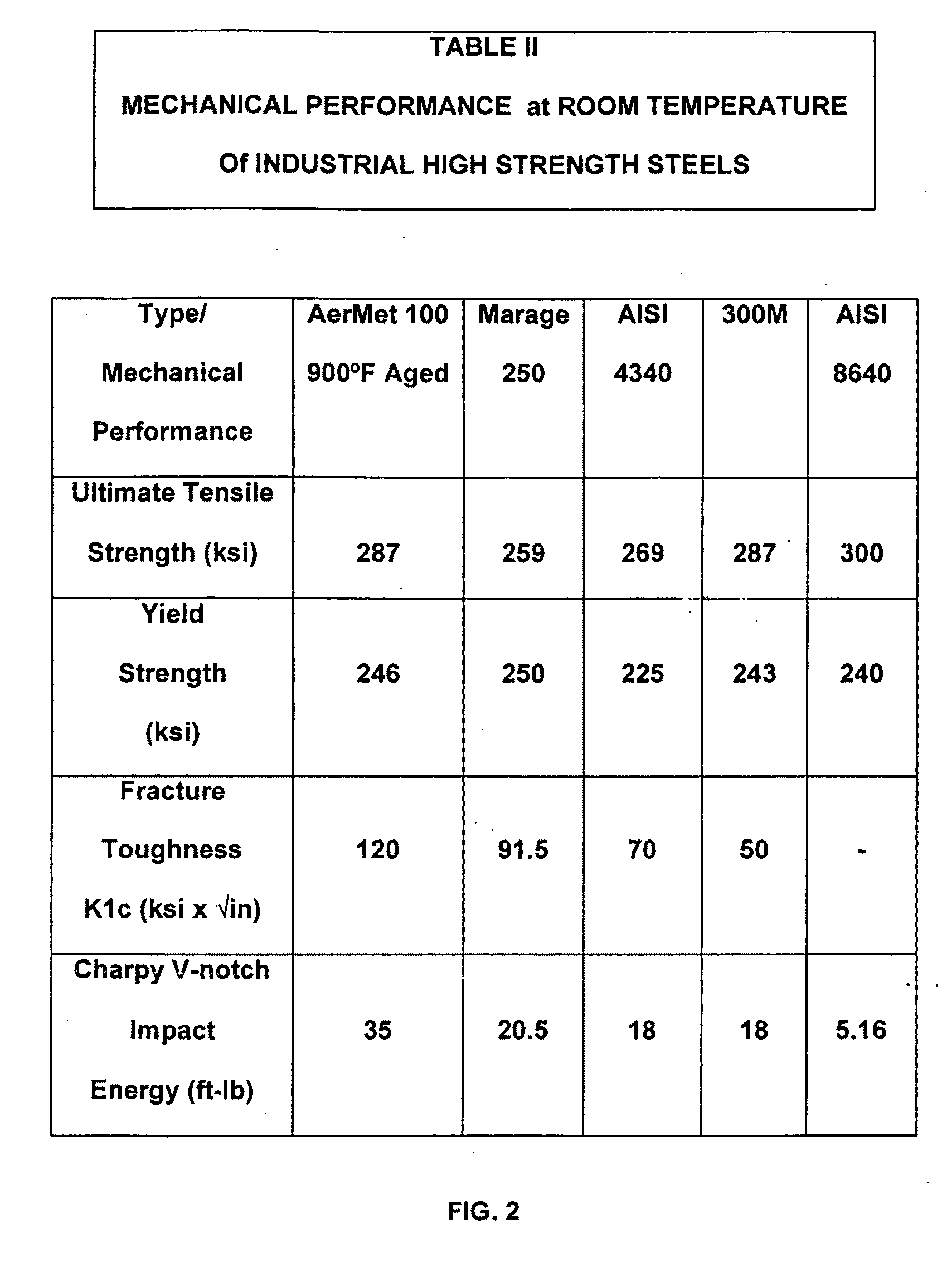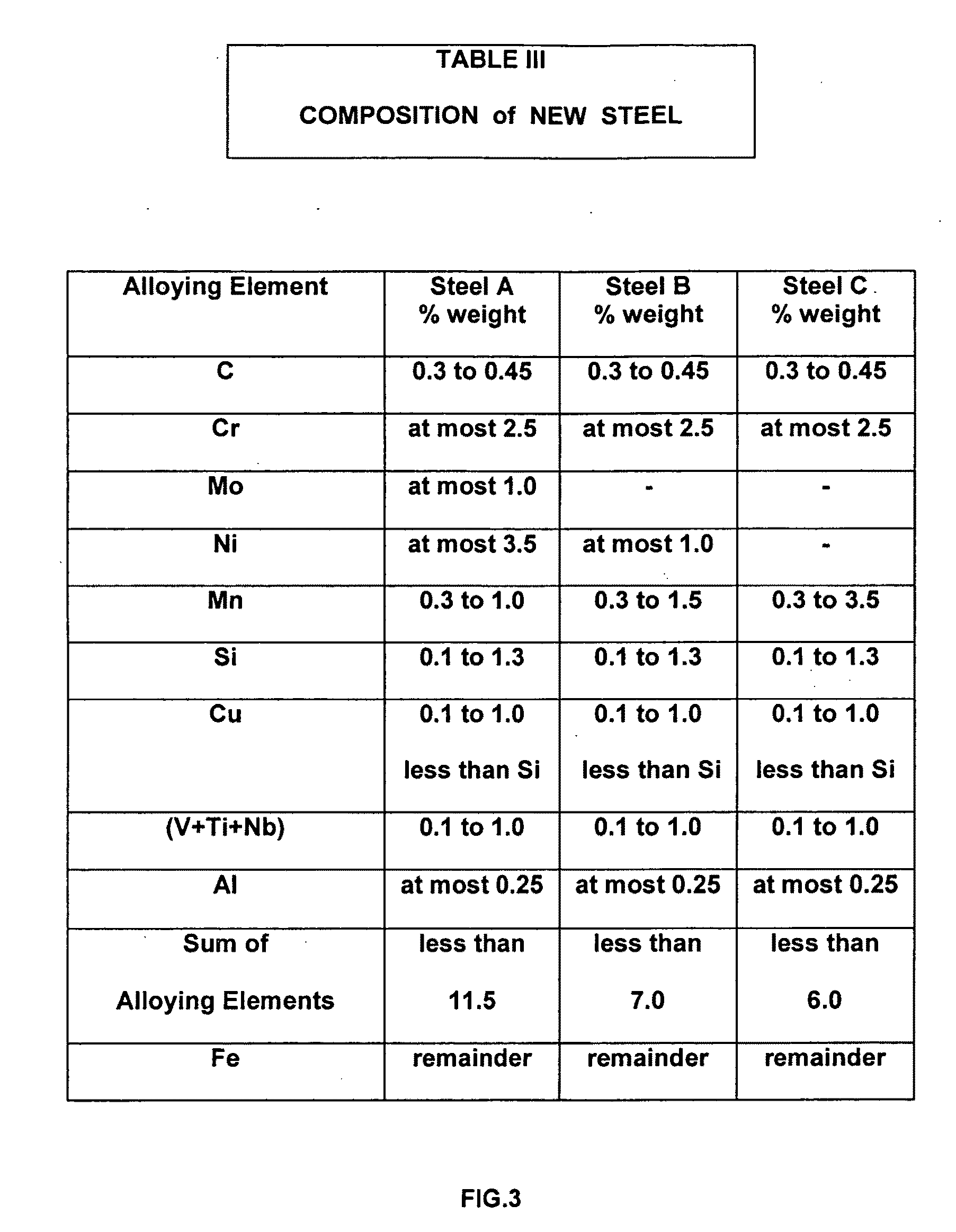Method of designing a low cost, high strength, high toughness, martensitic steel and an article made thereof
a martensitic steel and high toughness technology, applied in the field of reducing the cost of high strength steel, can solve the problems of high cost and large amount of expensive alloying elements, and achieve the effects of reducing cost, high toughness and high strength
- Summary
- Abstract
- Description
- Claims
- Application Information
AI Technical Summary
Benefits of technology
Problems solved by technology
Method used
Image
Examples
example 1
Steel A
[0172]Steel A has the optimum alloying concentration C=0.40, Cr=1.225, Ni=3.5, Mn=0.7, Cu=0.55, V=0.25, Si=0.9, Mo=0.5,and Ti=0.12
[0173]Processing of Steel A is shown on the diagram of processing, FIG. 7. The critical temperatures are defined by modeling.
[0174]CCT diagram of Steel A is shown on FIG. 8.1.
[0175]According to the calculations, Steel A has the following mechanical properties
Ultimate Tensile Strength (UTS),after austenizing at 1875-1925 F., oil quenching, refrigeration,284.5 ksiand low tempering at 350-400 F.after refrigeration, austenizing at 1875-1925 F., oil quenching,309.7 ksilow tempering at 350-400 F., and middle tempering at750-950 F. (second hardening)Yield Strength (YS),after austenizing at 1875-1925 F., oil quenching, refrigeration,229.4 ksiand low tempering at 350-400 F.after austenizing at 1875-1925 F., oil quenching, refrigeration,252.8 ksilow tempering at 350-400 F., and middle tempering at750-950 F. (second hardening)Charpy V-notch Impact Energy,afte...
example 2
Steel B
[0176]Based on the optimum alloying concentration #2, the new steel comprised by % weight: 0.37 of C; 1.22 of Ni; 0.68 of Mn; 0.86 of Si; 0.51 of Cu; 1.77 of Cr; 0.24 of V and the balance essentially Fe was melted.
[0177]Processing of the new steel was conducted according the diagram of processing, FIG. 7, that that was defined by the results of the modeling.
[0178]Heat treatment of the new steel was conducted according to the CCT diagram, FIG. 8.2, that was defined by the results of the modeling:[0179]Austenizing at 1625° F. for 60 min., oil quenching for 2 min., and then air cooling to the room temperature[0180]Refrigerating[0181]Tempering at 350° F. for 3 hours.
[0182]Tests of the specimens produced the following room temperature results.
Rockwell HardnessC 52Ultimate Tensile Strength (UTS)277 ksiYield Strength (YS):226 ksiElongation13.5%Reduction of Area52.1%Charpy V-notch Impact Energy32.2 ft-lb
The microstructure of the test specimens is shown in FIG. 6.
example 3
Steel C
[0183]Based on the optimum alloying concentration #3, the nickel-free new steel comprised by % weight: The new steel by % weight: comprised 0.37 of C; 0.52 of Mn; 0.76 of Si; 0.53 of Cu; 1.73 of Cr; 0.24 of V and the balance Fe and incidental impurities.
[0184]Processing of the new steel was conducted according the diagram of processing, FIG. 7, that that was defined by the results of the modeling.
[0185]Heat treatment of the new steel was conducted according to the CCT diagram, FIG. 8.3, that was defined by the results of the modeling:[0186]Austenizing at 1625° F. for 60 min., oil quenching for 2 min., and then air cooling to the room temperature[0187]Tempering at 350° F. for 3 hours.
[0188]Tests of the specimens produced the following room temperature results.
Rockwell HardnessC 53Ultimate Tensile Strength (UTS)281 ksiYield Strength (YS):216 ksiElongation12%Reduction of Area43%Charpy V-notch Impact Energy27.8 ft-lb
[0189]The Steel B and C had microstructures comprised of small p...
PUM
| Property | Measurement | Unit |
|---|---|---|
| yield strength | aaaaa | aaaaa |
| yield strength | aaaaa | aaaaa |
| yield strength | aaaaa | aaaaa |
Abstract
Description
Claims
Application Information
 Login to View More
Login to View More - R&D
- Intellectual Property
- Life Sciences
- Materials
- Tech Scout
- Unparalleled Data Quality
- Higher Quality Content
- 60% Fewer Hallucinations
Browse by: Latest US Patents, China's latest patents, Technical Efficacy Thesaurus, Application Domain, Technology Topic, Popular Technical Reports.
© 2025 PatSnap. All rights reserved.Legal|Privacy policy|Modern Slavery Act Transparency Statement|Sitemap|About US| Contact US: help@patsnap.com



